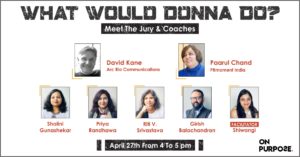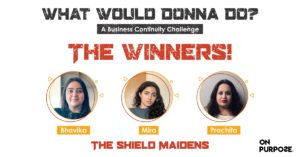The agency will provide strategic counsel on brand positioning and consumer engagement through an integrated communications approach
New Delhi, 14 March, 2022: ON PURPOSE, an integrated communications consultancy, best known for brand reputation management and driving social change, has been awarded the PR mandate for Beetel Teletech Ltd., one of India’s leading technology brands, offering contemporary solutions for modern India’s connectivity and I.T. needs. As communications partner, ON PURPOSE will be responsible for strengthening brand awareness and enhancing engagement for Beetel among its stakeholders, in addition to telling a compelling story of the company’s legacy and leadership as an integrated communications provider.
Commenting on the partnership, Mr. Sanjeev Chhabra, MD & CEO, Beetel said, “Beetel enjoys a unique position in the Indian market, owing to its leadership in the 360˚ecosystem that covers manufacturing, as well as distributing a huge range of products in the form of mobile devices, mobile accessories, IT peripherals, enterprise solutions and network solutions along with last mile distribution with logistics & supply chain. We are at a point of growth where it is imperative for us to create a strong consumer connect and build engagement through authentic storytelling and category differentiation. ON PURPOSE has a dynamic communications portfolio and a competitive team that includes storytellers, campaign specialists and communication experts, just what we need at this point in time. We are looking forward to working with them.”
Girish Balachandran, Managing Partner, ON PURPOSE said: “Beetel is one of the most reputed and respected brands in the country, manufacturing world-class consumer products and providing network & enterprise solutions for India and the globe. We are excited to work with the team and together achieve success in strengthening its positioning as a technology leader connecting businesses and people”
About Beetel Teletech Limited
“Founded in the year 1987, Beetel is one of the most reputed brand name in the Industry, a pioneer in the landline phone category. Beetel is focused on manufacturing as well as distributing a huge range of products in the form of mobile devices, mobile accessories, IT peripherals, enterprise solutions and network solutions, as well as fixed landlines. Beetel distributes a host of iconic brands like Avaya, Polycom, Samsung, Huawei, Siemens, QSC, RADWIN, Ruckus, RAD, and Actelis . Beetel is known for its innovative product solutions and latest technology, which are offered to customers at the most prudent prices. In India, Beetel is spread via 10,000 retailers and 500 distributors.
Beetel also extends Technical Services(Pre & Post Sales, Installations, Cloud, AMC etc.) helping with designing Solutions to getting them ready followed by System Configurations & Programming, Beetel covers the entire spectrum of services.
Overseas, Beetel’s services are extended to over 35 countries spread across five continents in the world. The company till date has manufactured over 100 million landline phones, a household Indian brand needing no introduction, which has been serving Indian customers for more than 34 years.
Media contact:
Deepika Batra
deepika@onpurposeconsulting.in
+91 9920193726
Shruti Sharma
shruti@onpurposeconsulting.in
+91 9711191616













